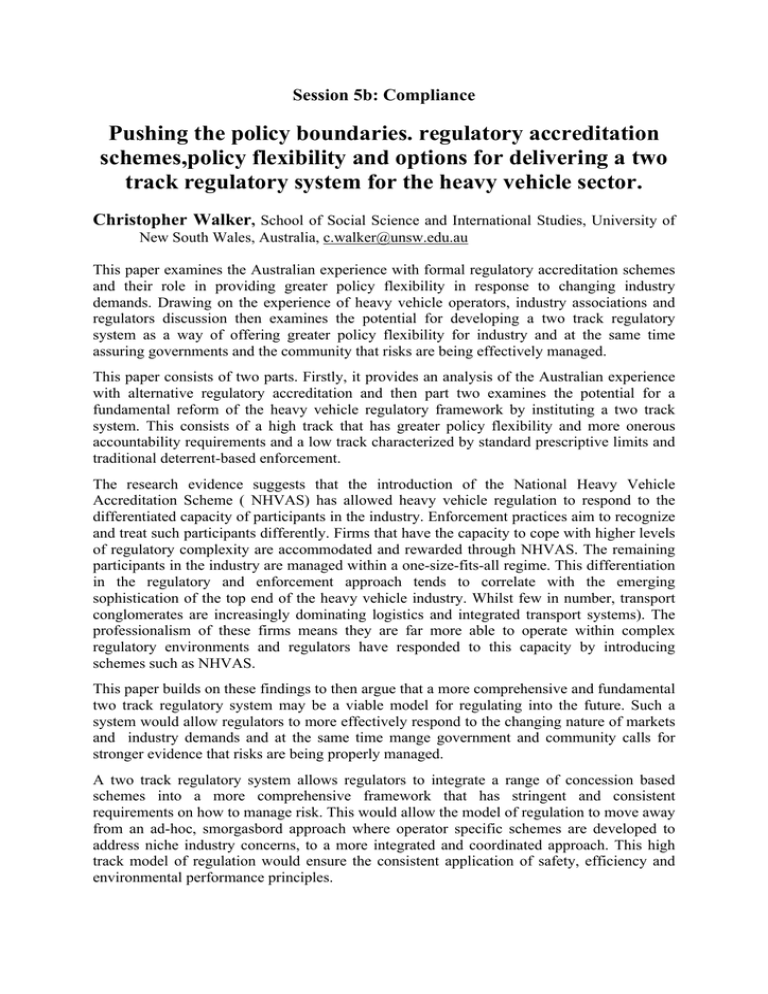Pushing the policy boundaries. regulatory accreditation
advertisement

Session 5b: Compliance Pushing the policy boundaries. regulatory accreditation schemes,policy flexibility and options for delivering a two track regulatory system for the heavy vehicle sector. Christopher Walker, School of Social Science and International Studies, University of New South Wales, Australia, c.walker@unsw.edu.au This paper examines the Australian experience with formal regulatory accreditation schemes and their role in providing greater policy flexibility in response to changing industry demands. Drawing on the experience of heavy vehicle operators, industry associations and regulators discussion then examines the potential for developing a two track regulatory system as a way of offering greater policy flexibility for industry and at the same time assuring governments and the community that risks are being effectively managed. This paper consists of two parts. Firstly, it provides an analysis of the Australian experience with alternative regulatory accreditation and then part two examines the potential for a fundamental reform of the heavy vehicle regulatory framework by instituting a two track system. This consists of a high track that has greater policy flexibility and more onerous accountability requirements and a low track characterized by standard prescriptive limits and traditional deterrent-based enforcement. The research evidence suggests that the introduction of the National Heavy Vehicle Accreditation Scheme ( NHVAS) has allowed heavy vehicle regulation to respond to the differentiated capacity of participants in the industry. Enforcement practices aim to recognize and treat such participants differently. Firms that have the capacity to cope with higher levels of regulatory complexity are accommodated and rewarded through NHVAS. The remaining participants in the industry are managed within a one-size-fits-all regime. This differentiation in the regulatory and enforcement approach tends to correlate with the emerging sophistication of the top end of the heavy vehicle industry. Whilst few in number, transport conglomerates are increasingly dominating logistics and integrated transport systems). The professionalism of these firms means they are far more able to operate within complex regulatory environments and regulators have responded to this capacity by introducing schemes such as NHVAS. This paper builds on these findings to then argue that a more comprehensive and fundamental two track regulatory system may be a viable model for regulating into the future. Such a system would allow regulators to more effectively respond to the changing nature of markets and industry demands and at the same time mange government and community calls for stronger evidence that risks are being properly managed. A two track regulatory system allows regulators to integrate a range of concession based schemes into a more comprehensive framework that has stringent and consistent requirements on how to manage risk. This would allow the model of regulation to move away from an ad-hoc, smorgasbord approach where operator specific schemes are developed to address niche industry concerns, to a more integrated and coordinated approach. This high track model of regulation would ensure the consistent application of safety, efficiency and environmental performance principles.




